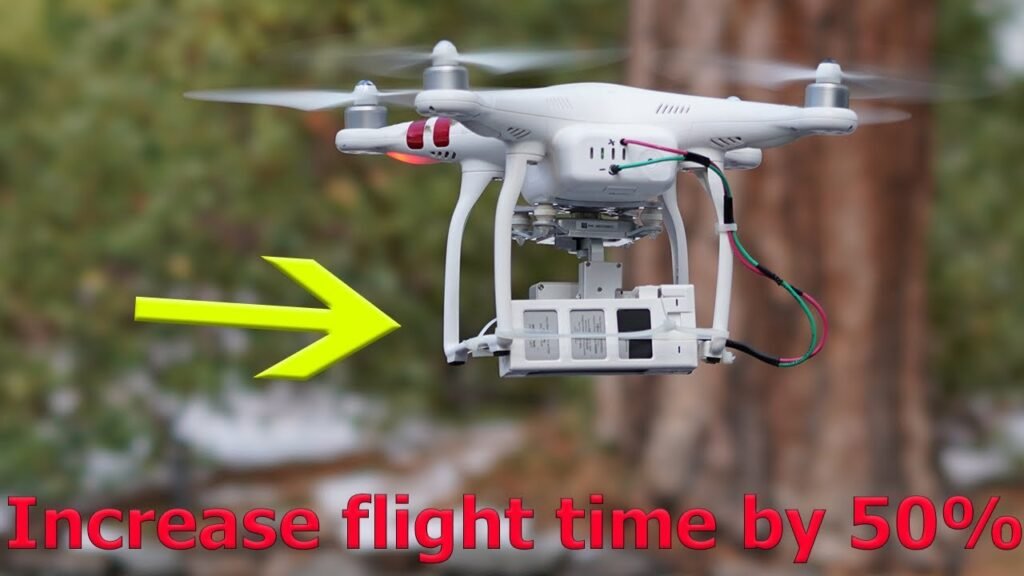Introduction
When you're working on your project with a drone, maintaining a long Drone Battery Life is crucial to obtain the correct information. A low battery charge for your drone, on the other hand, might prevent you from accomplishing much when flying your site.
Basically, you don't want your drone battery to die while you're conducting an assessment, which might be costly in terms of time. Here are some strategies for maximizing your drone's battery life and flight duration.
Before You Start Flying
By setting aside some time to plan your flight, you can avoid common blunders caused by running out of battery life. The first step is to study the location of your job site where you want to map and measure, then estimate how big it is. Planning your objective in advance allows you to get the most out of your drone flight, which will save you money on batteries.
If each flight covers just a few acres, the drone battery life won't be an issue. Most commercial drones on the market today will give you enough time in the air with some battery life to spare. Battery life for multirotor drones, on the other hand, is generally shorter than that of fixed-wing planes since they rely on their rotors to create both lift and propulsion.
Battery life is more important when performing surveys of larger properties. Shorter battery life might result in longer downtime between drone batteries and a greater need to bring extra batteries to your job, potentially restricting your productivity.
The weather can also have a significant impact on how long your battery will survive during your survey flight. Windy conditions put extra strain on the drone's motors, requiring them to work harder and draining your battery power faster. Humidity has a similar effect, increasing the weight of your aircraft. The greater the weight of your quadcopter is, the quicker its battery charge depletes.
Cold temperatures also decrease chemical activity in lithium polymer batteries, which are frequently used in drones. This can result in your drone losing power 50% faster than usual. If you have the option, try to schedule your flight for a clear, dry, calm day and remove any accessories you don't require for the journey (such as lens filters or propeller guards).
During The Drone Flight
Take some additional actions once your drone is in the air to get the most out of your battery life. You may want to take a quick test flight after setting up your ground control points to ensure that your ground control and camera sensor are functioning properly.
You don't want to land on your primary goal and discover that the pictures and data you submit to your processing platform are unusable. Additionally, plan a pre-determined flight objective so you don't waste time in the air deciding where to go or accidentally flying over the same location twice. This will assist you in voiding extra battery usage.
Other Useful Tips For Extending The Life Of Your Drone Battery Life.
The techniques above can help you keep your battery life in the short term, but to get the most out of your battery, you must care for your equipment. Here are some simple steps that will help you know when you'll be able to go out and survey with a full charge.
Charge The Drone Battery Before Flying
A few days after usage, most drone batteries begin to lose power naturally. So, if you don't use your drone on a regular basis, avoid charging it straight after use. To charge them up the day before or the day of your flight, wait until then.
Do Not Overcharge
Leaving the drone battery plugged in a charger may significantly reduce its longevity, necessitating a costly replacement. LiPo batteries can be damaged by overcharging. When a drone battery is overcharged, it becomes highly volatile and has the potential to cause chemical fires.
Store Your Drone Batteries Properly
Drone batteries should be kept in a cool, dry location with minimal humidity and constant temperatures. Extreme heat or cold can induce serious damage.
Don't Drain Your Drone Batteries Fully
You've likely heard that completely draining a lithium battery before recharging it is desirable. This isn't the case, however, with LiPo batteries. If your batteries' charge level drops below 3.0 volts per cell, you'll incur damage that may necessitate the purchase of new ones. A few minutes more flight time over your job site isn't usually worth the money.
Carry Useful Spares
You're better off having more batteries than not enough to complete a survey of your entire site. Drone batteries are small and easy to transport, so bring at least two with you on every job.
Conclusion
Use these tips to get the most out of your drone batteries and protect your investment. Drone batteries are an essential part of every UAV operation, so it's crucial to take the necessary steps to extend their life. By following the tips above, you can be sure that your drone batteries will provide you with years of reliable service.


